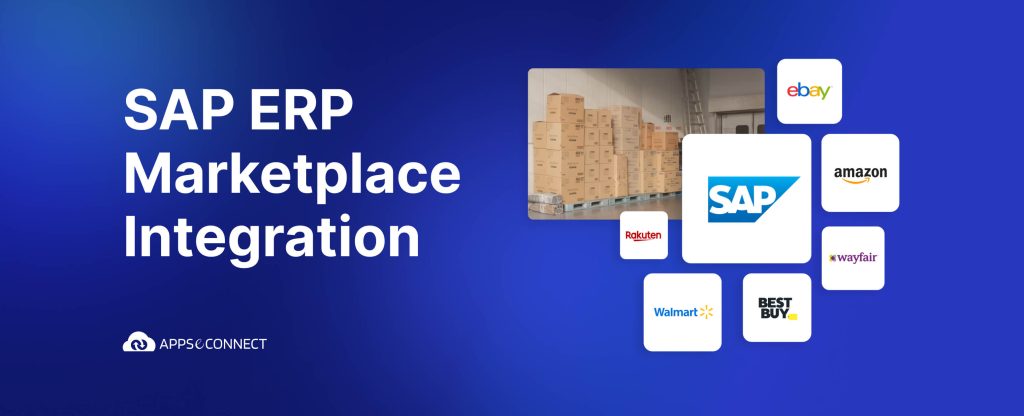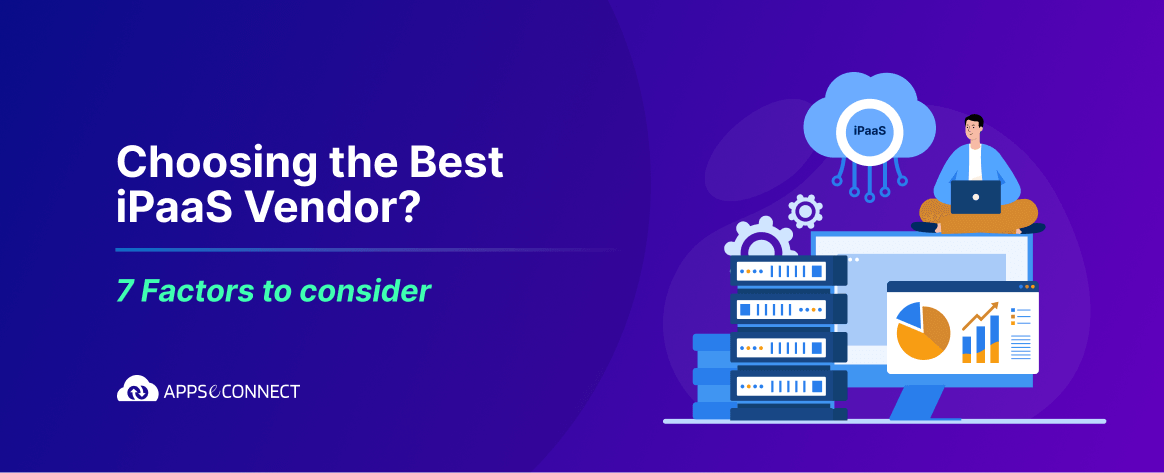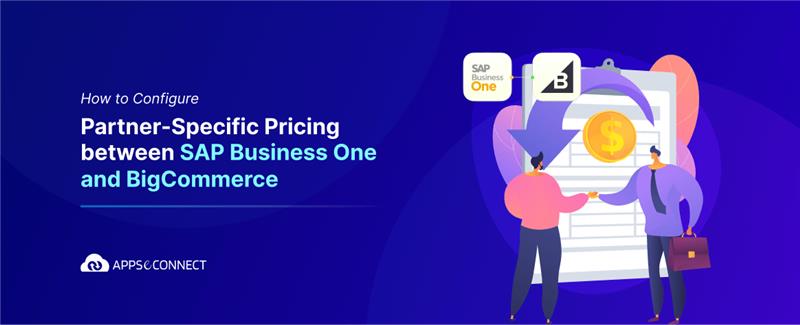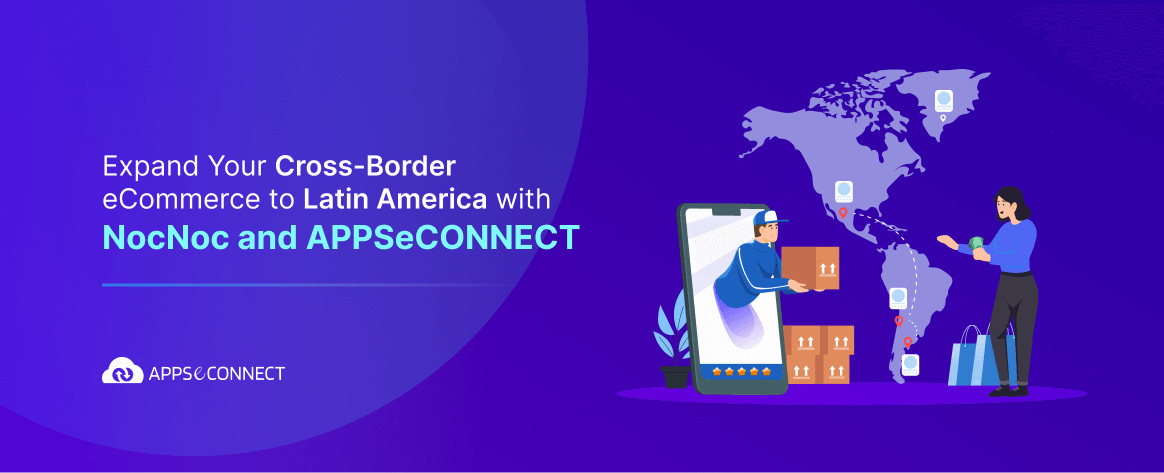In today’s ever-evolving business landscape, where digital transformation is reshaping industries and customer expectations are constantly evolving, not selling on online marketplaces means potentially missing out on a significant opportunity. Then comes the challenge of seamlessly connecting their enterprise resource planning (ERP) systems with their marketplace platforms. Among ERP systems, SAP stands out as a leader, providing businesses with a comprehensive suite of tools to manage their operations. Effective SAP ERP marketplace integration has become crucial for businesses to optimize their processes, streamline operations, and drive growth.
How SAP ERP Marketplace Integration Drives Success
By connecting ERP systems with popular marketplaces, businesses can harness the power of unified data and enhanced visibility to thrive in the digital marketplace. Let’s explore the significance of ERP marketplace integration, with a particular focus on SAP, and the benefits it brings to businesses in terms of efficiency, scalability, and competitiveness.
Market dynamics are transforming, and neglecting to sell on digital marketplaces may result in losing out on a substantial opportunity. A growing number of digitally savvy global customers exhibit certain characteristics:
- They are increasingly making buying decisions and spending online.
- They prefer the convenience of having products shipped directly to their homes.
- They are comfortable with subscription-based services that offer flexibility.
- They actively seek excellent customer service.
- They align themselves with socially responsible practices, sustainability, and a healthy lifestyle.

It’s no surprise that technology is a crucial factor contributing to this unparalleled growth. In this article, we will examine a specific case study showcasing how some companies have utilized marketplaces to boost their growth. We will then discuss some of the lessons that SAP-based companies can learn and hopefully benefit from.
Thrasio, Harry’s, and Mensa are notable examples of companies that have experienced remarkable growth since their inception. These companies have achieved significant scalability within a relatively brief period, thanks to their extensive market presence and penetration.
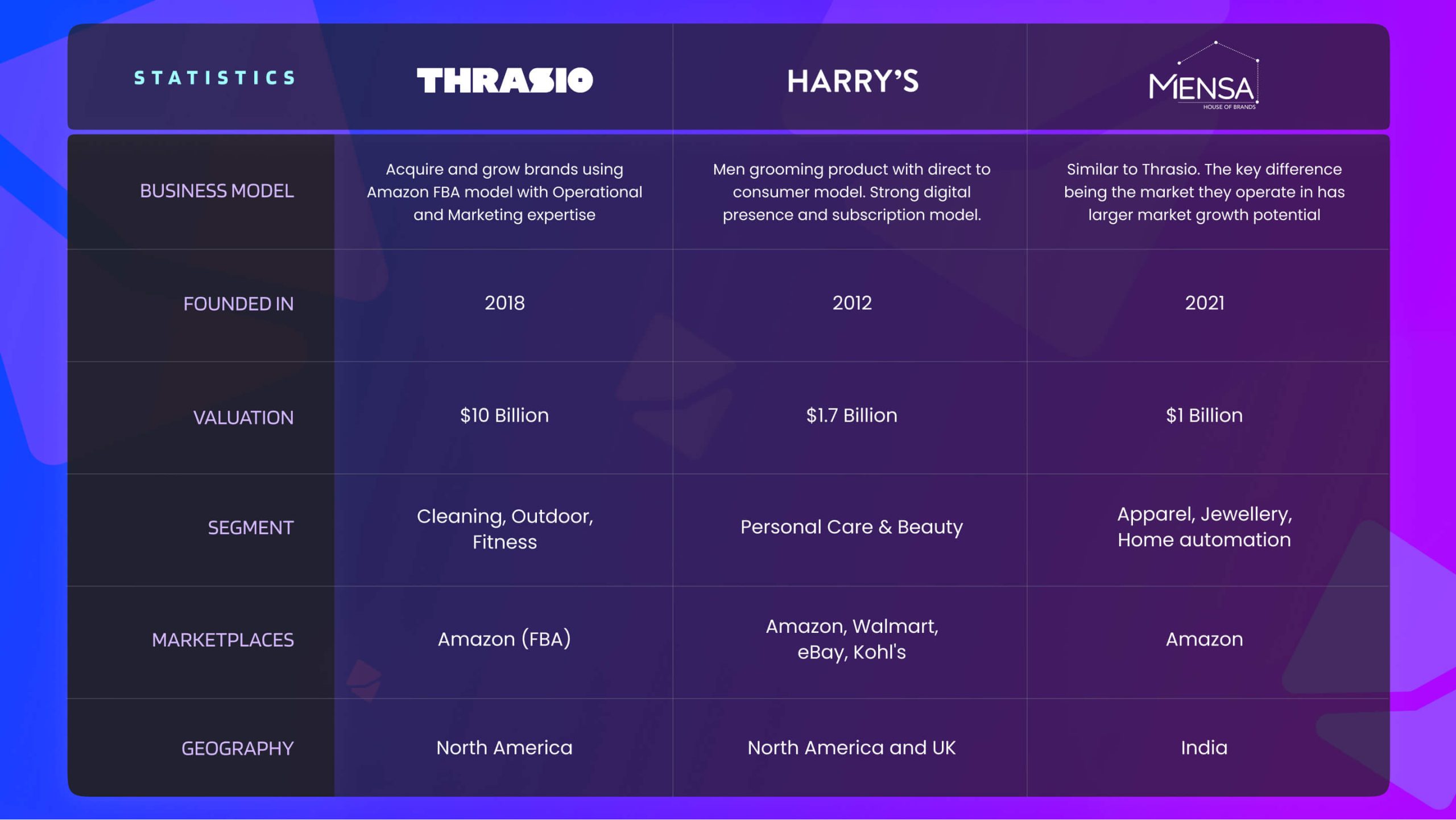
When we analyze the success stories of the companies mentioned, several crucial aspects emerge as prominent factors that contribute to their achievements. Let’s delve deeper into each aspect:
- Humongous Market Size: These companies recognize the immense opportunities that exist in segments and geographies with low marketplace penetration. A prime example is Mensa Brands, which attained a remarkable $1 billion valuation within a year of its incorporation. This exceptional growth can be attributed to their identification of significant expansion potential in specific combinations of geographies and segments. By targeting these underserved markets, they were able to tap into a vast customer base and capture market share rapidly.

Source: Mensa Brands - New Era of Digital Branding and Storytelling: The advent of digital marketing has revolutionized how companies build brands and engage with their target audience. Successful companies are leveraging digital platforms to craft compelling brand narratives, communicate their value propositions effectively, and gain deep insights into customer preferences and behavior. For instance, Thrasio’s achievement in re-packaging and expanding Angry Orange demonstrates how strategic digital branding and storytelling, combined with product line diversification, can lead to exponential growth. Angry Orange is an FBA brand known for its citrus concentrate that effectively eliminates pet odors. Thrasio recognized the potential for market growth and invested in a comprehensive redesign, including labels, photography, video, and enhanced brand content. The impact was remarkable, with a significant increase in sales almost immediately. By understanding their customers’ needs and desires, they were able to position their brand effectively and achieve 10x growth within a short 12-month period. This success highlights Thrasio’s expertise in reinvigorating FBA brands and driving rapid expansion.

- Supply Chain and Operational Excellence: Succeeding in the marketplace isn’t solely about generating orders; it’s about providing customers with an outstanding experience. Companies that prioritize supply chain and operational excellence can ensure seamless order fulfillment and exceptional customer satisfaction. By meticulously planning disruptions and carefully managing their operations, these companies establish the necessary capabilities to meet customer demands efficiently. This focus on supply chain management and operational excellence allows them to maintain high levels of customer satisfaction and build loyalty in a competitive marketplace.
Unleashing Growth Potential: Learning from Disruptions
Recognizing the potential in untapped markets, embracing digital branding and storytelling, and prioritizing supply chain and operational excellence are essential strategies for businesses seeking growth and sustained success in today’s rapidly evolving business landscape.
The evolving landscape of disruptions presents new opportunities in large markets with low market penetration. It is impossible to deny the speed at which disruptions are spreading across the globe. Let’s explore the following compelling facts to demonstrate this point:
- The world’s most valuable car manufacturer was relatively unknown 5 years back. This exemplifies the automotive industry’s quick rise and transformation.
- The world’s largest taxi company has grown an astonishing 35 times in the past 7 years. This exemplifies the tremendous impact of disruptive ride-sharing platforms on traditional transportation services.
- A similar story unfolds in the hotel industry, where Airbnb, a home-sharing platform, boasts more listings than the top 5 hotel brands combined. It currently has over 6 million listings.

It’s important to understand that disruptions are not limited to multi-billion-dollar segments alone. These disruptions are happening at an astounding rate, even in specialist markets or smaller businesses. One noticeable trend is the sharp rise in the number of unicorns or firms with a $1 billion value. This surge of unicorns is a sign of the diverse industries’ exponential growth and potential, underscoring the wide range of opportunities available.
I can claim with confidence that disruptions are transforming industries of all kinds, from the biggest global marketplaces to smaller, more niche subsectors. In order to take advantage of the new prospects, it is essential for organizations to remain vigilant, embrace innovation, and adapt to these emerging transformations.
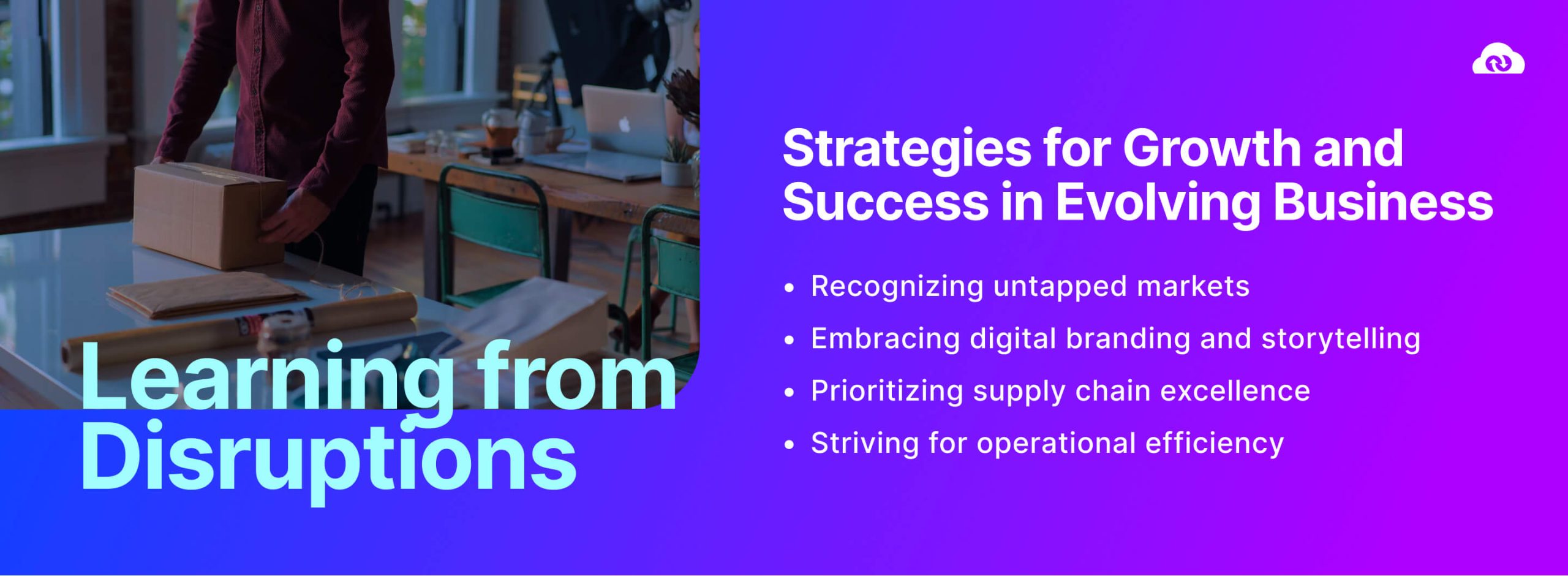
SAP Customers Leveraging Marketplaces
Indeed, the success stories of companies that run on SAP and have disrupted their respective segments are truly inspiring. Let’s explore some additional information about these companies:
- Blum Inc: Established in 1951, this North Carolina-based manufacturer has become a leader in kitchen cabinets. Blum Inc’s products are sold on popular marketplaces such as Amazon, Wayfair, and Overstock. Their presence on Amazon can be seen through their product listing on the Amazon store, showcasing their reach in the e-commerce space.
- ConAgra Brands: Arguably the largest conglomerate in the food processing industry, ConAgra Brands boasts numerous brands that cater to restaurants, supermarkets, and consumers. One of their well-known brands, Hunt’s, can be found on marketplaces like Amazon and Walmart. Their Walmart listing provides a glimpse of their presence on Walmart Marketplace. Needless to say, they also distribute their products through other prominent marketplaces such as Target, Sam’s Club, and Kroger.
- Allbirds: A sustainable footwear and apparel company, Allbirds operates both in a direct-to-consumer (D2C) model and through marketplaces. They have successfully leveraged Walmart Marketplace, among other channels, to expand their reach. In their first 2 years after implementing digital initiatives, Allbirds sold over a million pairs of shoes, showcasing the potential for growth through strategic marketplace partnerships.
- Casper Sleep: Based in New York, Casper Sleep has revolutionized the way mattresses, pillows, and bed frames are sold. They have adopted a hybrid approach, selling directly to consumers and also through popular marketplaces like Wayfair, Best Buy, and Amazon. This multi-channel strategy allows them to reach a wider customer base and tap into the convenience and reliability offered by established marketplaces.
- Zappos: Known for its shoes and apparel, Zappos has built its business model around digital sales. They have formed a strategic partnership with Amazon and prioritize exceptional customer service. Zappos exemplifies how companies can embrace the digital landscape and leverage marketplace collaborations to enhance their customer experience and drive sales.
Numerous digital-native niche brands have emerged in recent years. This trend has prompted many consumer product companies that traditionally relied on traditional retail and marketplace channels to reconsider their go-to-market strategies. As a result, these companies are now embracing Direct-to-Consumer (D2C) channels to revamp their business models and adapt to changing market dynamics.
SAP ERP Marketplace Integration – Technical and Business Considerations
If you are wondering how and where to get started with integrating SAP with Amazon, Walmart, and eBay, you’re in good company! Though these marketplaces provide APIs for integration, you must be a certified developer to be able to execute the integration. Also, APIs evolve every year and hence maintaining custom code for the same is not such a great idea.
By utilizing an iPaaS solution, you can streamline the integration process, enabling seamless communication between SAP and your preferred marketplaces. This integration solution acts as a bridge, leveraging pre-built connectors and APIs to establish a cohesive platform. The iPaaS solution provides a centralized hub to manage and monitor the integration, simplifying the complexity associated with the process. It facilitates the exchange of data, including product information, inventory updates, pricing details, and order management, between SAP and the marketplaces in a secure and efficient manner.
Rather than delving into the intricate technical details of the integration solution, let’s focus on the functional aspect of how the solution would work in SAP.
Configuring Order to Cash Cycle
When it comes to configuring the Order to Cash cycle, it’s important to explore different options based on how you handle your order fulfillment:
- Consignment Process: If the marketplace, such as Amazon or Walmart, is responsible for your fulfillment, their distribution center functions as virtual plants within your SAP system. Products are sold directly from these centers, and it’s crucial to ensure timely replenishment. Planning the consignment fill-up is essential to prevent missed opportunities when your merchant account runs out of stock. In this scenario, the marketplace, like Amazon, acts as your customer for all consignment orders.
- One-to-One Orders: If you handle order fulfillment internally, you may consider synchronizing each marketplace order with customer details (keeping in mind that certain customer fields might be restricted by Amazon). You can create one-time customer profiles and sync every order into SAP, including fees, marketplace commissions, and more. This approach allows you to track every marketplace order and reconcile at the order level. However, it may not be suitable for high-volume, low-value business models.
- Consolidated Period Order: If you prefer the one-to-one order approach but are concerned about order volume, you can opt to consolidate marketplace orders periodically. This involves grouping several marketplace orders into a single order entry in SAP. By consolidating orders, you streamline the process and reduce the number of individual entries, making it more manageable.
Stock Reconciliation and Dispute Management
When integrating with a marketplace, stock reconciliation and dispute management play a vital role. This becomes particularly important when your fulfillment is managed by the marketplace, such as with FBA (Fulfillment by Amazon). The process of transferring your stock to Amazon’s warehouse and getting it onto their shelves can take several days, and there may also be instances of customer returns. To effectively handle these scenarios, seamless integration between your systems is necessary. It ensures that inventory levels are synchronized accurately and enables efficient management of disputes related to stock availability and returns. By establishing a close integration between your platform and the marketplace, you can ensure smooth stock reconciliation and effective dispute resolution.
Automated Finance Management
Automated Finance Reconciliation is another critical element of the integration process. As my colleague Suva elaborates in his LinkedIn post, this aspect is vital for the ongoing success of your business and the attainment of your financial objectives. Implementing automated finance reconciliation ensures that your financial records are regularly reviewed and aligned with the marketplace transactions. By automating this process, you can enhance accuracy, save time, and maintain a clear understanding of your financial performance within the integrated ecosystem.
Learnings for SAP Customers
Having gained insight from certain examples already let us explore the ways in which you could kickstart your marketplace strategy.
Getting to Know the Tricks of the Trade
Starting from square one and conducting an initial analysis would be beneficial.
- Choosing the Marketplace(s): Determining the appropriate marketplace(s) primarily depends on the nature of your products. Different marketplaces have their own unique appeal. For instance, if your company specializes in home improvement products, it would be beneficial to list them on Wayfair. On the other hand, if you sell electronics, you may find that BestBuy, Amazon, and Walmart offer excellent opportunities for traction. To begin your evaluation, put yourself in the position of a consumer and consider which marketplace(s) you would personally explore to purchase products similar to those offered by your company. Additionally, analyzing your competitors’ presence on various marketplaces can provide valuable insights. However, it is possible that this strategy may not align well with your business objectives. In such cases, it is worth exploring whether a direct-to-consumer approach would be more suitable.
- Customer Segmentation: Considering your intention to proceed with the marketplace(s), it is crucial to identify the customer segments to which your products appeal. Understanding your target audience is essential for effective branding, packaging, and promotion of your offerings. By aligning your strategies with the preferences and needs of specific customer segments, you can enhance the attractiveness and visibility of your products in the marketplace.
- Subscriptions: Consider whether your customers are likely to engage in a recurring buying cycle for your product. Subscription-based models have gained significant popularity, particularly in software/streamlining categories like Microsoft Office 365, Norton, Amazon Prime, Netflix, and Hulu. However, the subscription model is gaining traction in other industries as well, including Nutrition and Fitness (Birchbox, iFit, Classpass), Fashion (Stitchfix), and Beauty/Personal Healthcare (Harry’s, Chewy). Assessing the potential for a subscription-based approach can help you determine if it aligns with your product and target market.
- Commercial Terms: To ensure successful integration with marketplaces, it’s important to understand the commercial terms they offer. Reach out to your local marketplace contact to gather detailed information on these terms. You can also find additional resources and information by visiting the following links to sign up for seller accounts on the respective platforms:
It’s worth noting the customer-centric nature of marketplaces. Providing exceptional customer service requires a high level of agility from sellers. Ultimately, integrating with marketplaces and utilizing them as an additional revenue stream should align with your bottom line and prove financially viable.
- Country-specific Statutory Requirements: In certain regions, particularly in Europe and Latin America, there exist specific statutory requirements that govern the invoicing process. These requirements pertain to factors such as invoicing formats, tax regulations, and legal obligations. It is imperative for businesses operating within these regions to thoroughly understand and adhere to these statutory requirements when integrating their operations with marketplace platforms. This ensures that all invoicing activities, including the generation, transmission, and storage of invoices, comply with the relevant regulations. By doing so, businesses can maintain legal compliance, avoid penalties, and foster trust among their customers and marketplace platforms.It is also important to take into account the customer return and refund process. Returns and refunds are integral parts of the overall transaction lifecycle, and businesses need to align their processes with the specific regulations and guidelines governing these activities. By incorporating these considerations into their marketplace integration strategy, businesses can effectively navigate the complexities of compliance and enhance customer satisfaction and trust.
- Operational Efficiency: As I mentioned earlier, customer satisfaction and enhancing their buying experience are at the heart of the marketplace. Same-day shipping, accurate inventory management, flexible promotions, and seasonal discounts are key factors for success. Integrating SAP with marketplaces, such as Amazon Seller Central, is essential for achieving operational efficiency. This integration benefits both customers and businesses by streamlining stock management and financial reconciliation, especially considering the transaction volume involved. Here is a quick reference to SAP and Amazon Seller Central integration, highlighting the importance of efficiency in meeting customer needs and optimizing backend operations.
- Efficient Supply Chain: Efficiency in the supply chain is worth mentioning in relation to the previous points. Regardless of whether you manufacture your own goods or engage in trading, it is crucial to ensure a smooth supply chain process and avoid canceling customer orders due to inefficiencies. Services like Fulfilled by Amazon and Walmart Fulfilment Services can provide valuable assistance when it comes to shipping goods, going above and beyond to optimize the logistics aspect.
- Expanding to Untapped International Markets: When examining the success stories of marketplaces, certain evaluation criteria stand out. The markets that experience the highest growth are typically characterized by the following factors:
- A sizable segment that encompasses both offline and online channels.
- A gradually increasing penetration and adoption of marketplaces within those markets.
To illustrate this, let’s consider Mensa, a company primarily focused on the Indian market. Mensa specializes in the Fashion, Lifestyle, and Jewelry segments.
According to Bain’s report on online shopping in India, the penetration of e-retail reached 4.6% by the end of FY2021.
For those wondering which markets are witnessing significant traction in the realm of marketplaces, a report from Marketpulse.com highlights Canada, Australia, Germany, India, UK, Brazil, and Japan as key markets where Amazon is experiencing rapid growth.
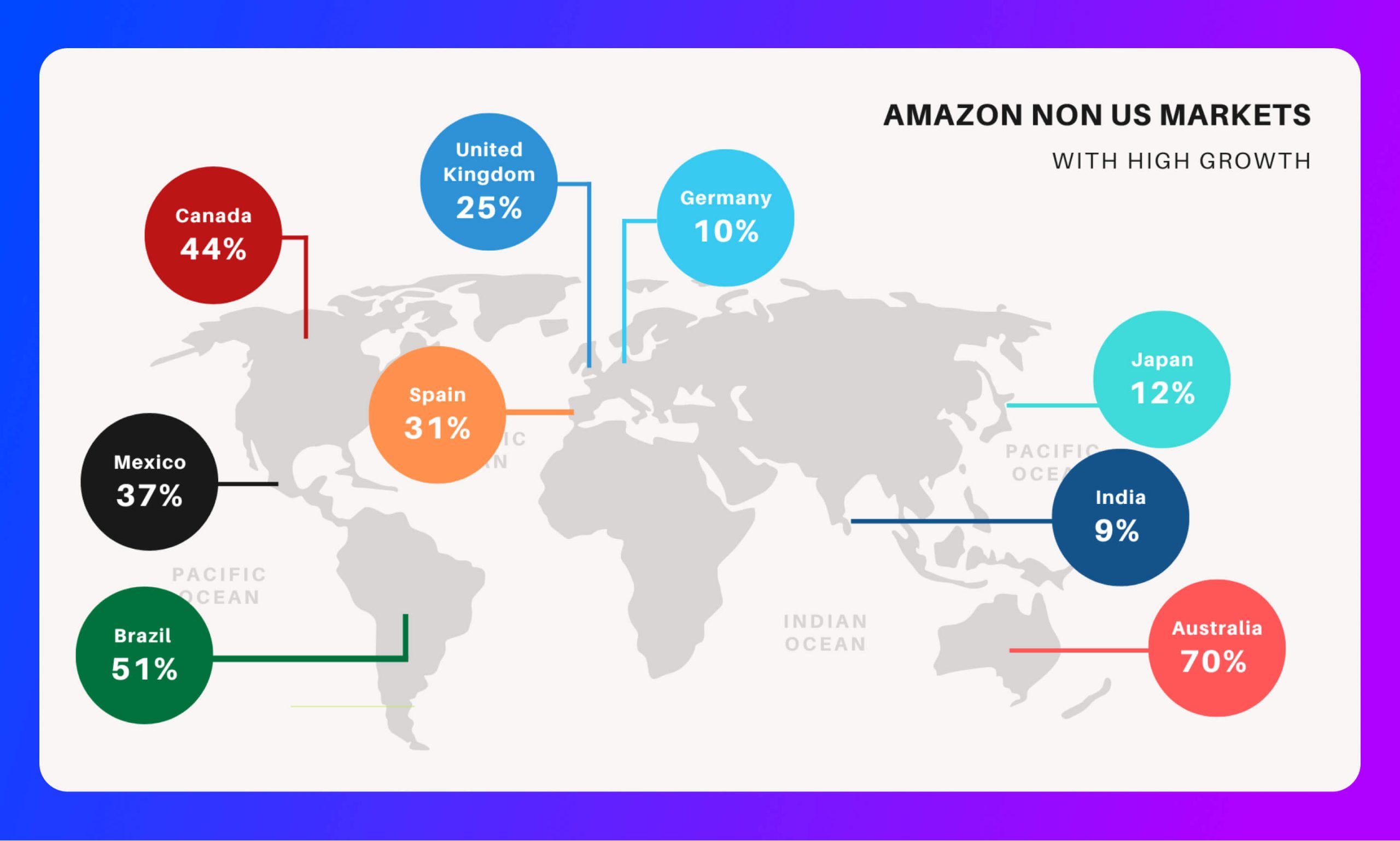
- Product Packaging and Marketing: As demonstrated by the Angry Orange case study, the visual presentation of a product, along with effective branding and online marketing, plays a significant role in the success of a merchant. This skill set encompasses professional product photography/videography, running paid promotions on marketplaces, and leveraging influencer marketing. If your organization lacks these capabilities, it may be beneficial to consider outsourcing these tasks.
- Customer Reviews: When marketplaces such as Amazon emphasize their customer-centric approach, they truly prioritize the customer’s experience. It is crucial for your operations team to pay attention to each customer review, acknowledging the positive ones and addressing any concerns. A high level of customer satisfaction in digital marketplaces can have tremendous long-term benefits. It is essential to feed customer information, purchase history, and feedback back into the CRM system to maintain a loyal customer base.
- Your Own eCommerce Store/Catalogue: As your marketplace business grows, you may consider enhancing or establishing your own online store. Creating a comprehensive product catalog on popular eCommerce platforms such as Shopify, Magento, or BigCommerce can be a valuable starting point. Some customers may prefer to make direct purchases from you, and having your own online store enables you to cater to their needs.
Download our free eBook on SAP Integration Best Practices and explore APPSeCONNECT features for SAP integration, the best practices to go by, and industry-tested use cases to help you relate. In this eBook, readers will get deep insights into the true workings of SAP and the best methodology to adopt during implementation and integration.
Download eBook Now!
Conclusion
In conclusion, selling on popular marketplaces offers businesses of all sizes a significant advantage. It not only allows them to attract more customers in their current markets but also provides an avenue for expanding into new geographies. One of the key benefits is the reduced risk associated with entering new markets, particularly when the digital penetration in the targeted market segment is low. This presents tremendous potential for growth and market share acquisition. Moreover, by implementing a low-maintenance integration solution, businesses can expedite their market presence across different geographic clusters, further enhancing their reach and impact. Overall, embracing popular marketplaces as part of a comprehensive business strategy can be a highly effective approach for enterprises seeking to maximize their sales opportunities and expand their footprint.
According to industry experts, the marketplace model offers a strategic advantage by leveraging established platforms and their customer base. Scott Galit, CEO of Payoneer, stated,
“Marketplaces are a powerful force that can’t be ignored. They have the ability to bring global reach and instant liquidity to sellers in ways that few other business models can match.”
In a world driven by digital connectivity, embracing popular marketplaces is more than a business opportunity—it’s a gateway to unlimited possibilities and accelerated success. So, seize the moment, expand your horizons, and embark on a marketplace journey that will propel your business to new heights.


